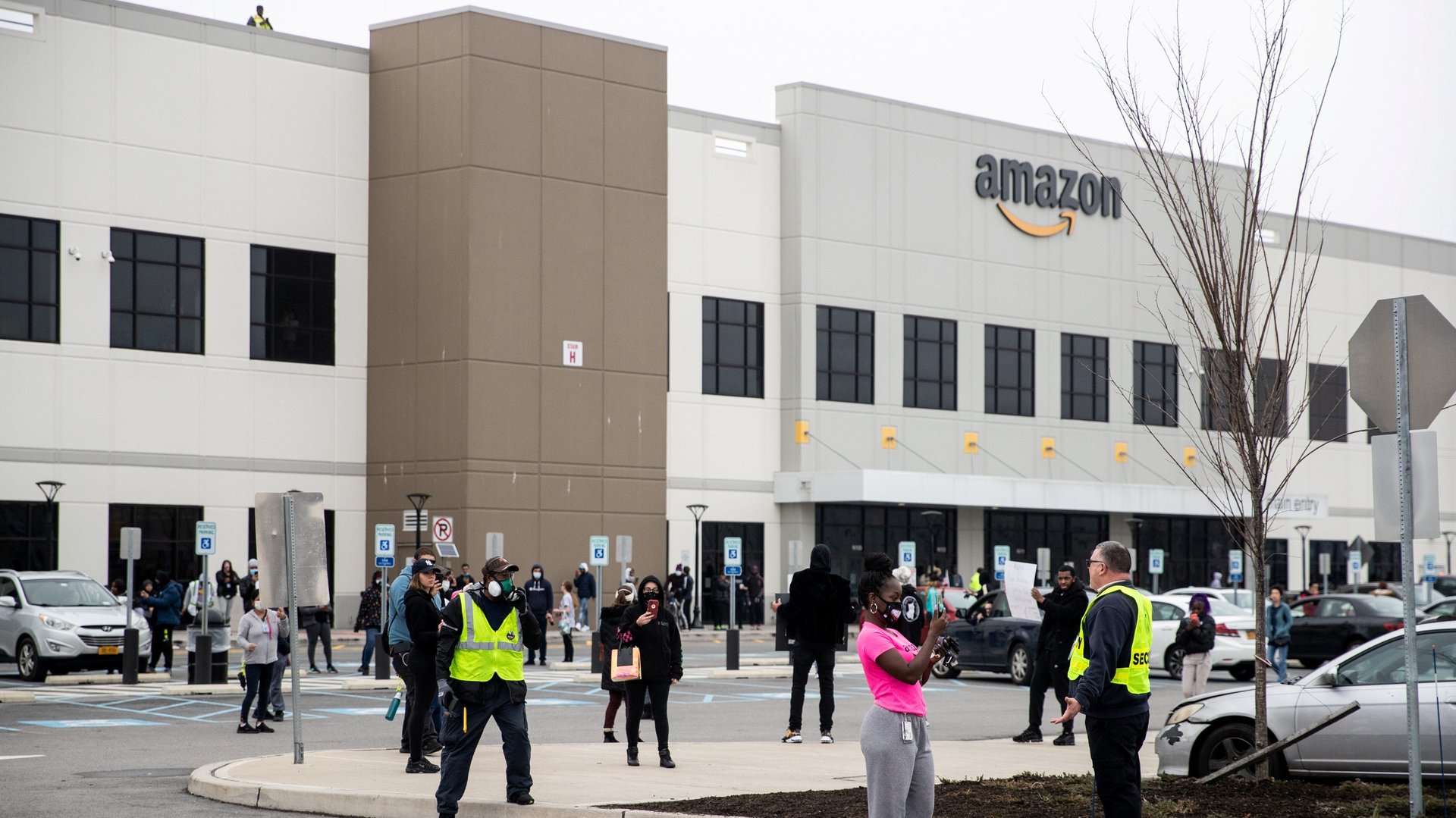Is Amazon approaching its breaking point in the Covid-19 crisis?
Ordering groceries from Amazon right now can feel like playing a game of whack-a-mole. Demand is so high among shoppers home-bound in the Covid-19 pandemic that in cities such as New York delivery slots are completely booked at Amazon Fresh and its Whole Foods grocery stores. When slots do pop up they can disappear again in an instant. The situation has prompted comments on Reddit and led a developer to post a tool on Github that automatically refreshes an open browser window in the background every 60 seconds until it finds an open slot. Meanwhile, items in a shopper’s cart can sell out as they wait and be removed without warning.


Ordering groceries from Amazon right now can feel like playing a game of whack-a-mole. Demand is so high among shoppers home-bound in the Covid-19 pandemic that in cities such as New York delivery slots are completely booked at Amazon Fresh and its Whole Foods grocery stores. When slots do pop up they can disappear again in an instant. The situation has prompted comments on Reddit and led a developer to post a tool on Github that automatically refreshes an open browser window in the background every 60 seconds until it finds an open slot. Meanwhile, items in a shopper’s cart can sell out as they wait and be removed without warning.
It’s at this moment, when Amazon needs its fulfillment centers running smoothly and at full capacity, that the company is facing serious discontent from workers in those centers.
Yesterday, at one of the company’s warehouses in Staten Island, New York, workers staged their second walk out in protest of conditions they say leave them at risk of contracting the new coronavirus. Last week Amazon employees near Detroit held a similar demonstration.
Workers have been speaking out about their well-being and to complain about a lack of protective equipment such as masks. So far, more than 50 Amazon fulfillment centers have had workers test positive for the virus out of more than 500 around the US, the New York Times reports. Work attendance in the warehouses, it added, is down as much as 30%. The company’s handling of the labor disputes and comments by Amazon’s top lawyer about a fired worker have left even corporate employees dismayed.
In an emailed statement, Rachael Lightly, an Amazon spokesperson, said the company has “taken significant preventative measures to keep people safe,” such as performing temperature checks, deep cleaning its warehouses, and implementing social-distancing rules. By the end of today the company plans to have distributed masks to all its sites, she said. Amazon is also now testing a “disinfectant fog” at the Staten Island facility, and it has been listing its other measures to keep warehouse workers safe in a blog post.
Meanwhile, the company seems nearly stretched to the limit keeping up with customer demand. The number of orders at Amazon Fresh surged through the start of the year and the increase is only accelerating, according to data from Rakuten Intelligence, an e-commerce research company.
Dan Frommer, former editor-in-chief of Recode and one-time Quartz reporter, pointed out recently in his publication New Consumer that, in normal circumstances, online grocery delivery is a convenience and accounts for a small share of grocery sales. “But as US cities shut down, and as tens of millions stay home to help ‘flatten the curve,’ grocery delivery has become essential infrastructure,” he wrote. “And as demand spikes, it’s showing its cracks.”
The problem isn’t Amazon’s alone. Services such as Instacart and Fresh Direct are showing strain too, while in the UK, online grocer Ocado has warned shoppers to place delivery orders early because of the “exceptionally high demand.”
At Amazon, the cracks may only widen further as shelter-at-home orders grow and more shoppers turn to it for necessities, putting still more pressure on the company’s warehouse staff. “None of this works without our employees,” Jay Carney, Amazon’s senior vice president for corporate affairs, told the Times. Amazon could be at risk of learning how true that is.